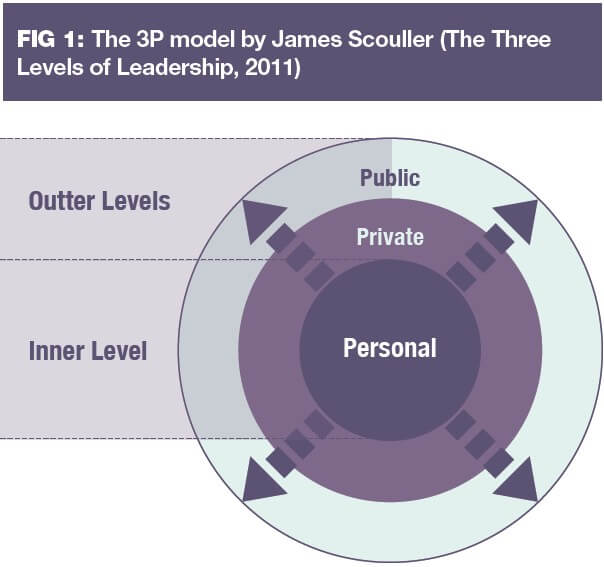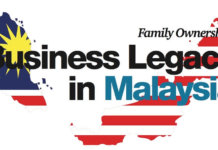The discussion of what makes a successful leader has been tackled from many different angles. In family businesses, leadership carries with it a unique layering of responsibility. By deconstructing the leadership concept, Abdullah Adib Al Zamil, PhD candidate and member of the Zamil Group, proposes a new perspective on how to lead and how, when best applied, it can benefit family businesses.
I don’t know about you, but hearing the word leadership brings to my mind grand images of great warrior leaders: The Duke of Wellington mounting his horse or Admiral Nelson looking over London from atop his needle. I’m pretty sure I’m not the only one who forms this type of mental association. These images are of victorious military leaders whose success, albeit illustrious, is limited to a campaign or a series of campaigns. We don’t exactly celebrate a family business for its success based on this project or that, but rather on how long it has successfully survived. So perhaps a more appropriate association should be made to monarchical systems who have survived all the victories, defeats, rebellions, and the rise and fall of their economies. Considering that monarchies aren’t exactly fashionable in the modernity of a driven corporate world, I’ll shelve that example.
In the business world, I take pride in representing my family as a member of a collective as opposed to standing as a sole individual. I am aware of how important individuality is, yet I also understand the importance of the family business structure and how strong a model it represents. With this in mind, I would like to approach leadership from the perspective of the family collective.
When leadership was first researched, it was thought of as an innate quality, or characteristic; something that a person is born with. Intelligence, charisma, extroversion, openness to experience, and conscientiousness were the qualities deemed essential to true-born leaders. The ability to lead was thought of as a gift of nature rather than a product of nurture. There is truth in this theory as we see it in people around us and perhaps within our own families. I differ with this line of reasoning within a family business context however, as I feel we should be cautious in defining leadership this way. There are enough entitlement complexes so adding to that list can never be healthy!
This ‘natural leadership’ approach, however, has since been countered by those who suggest that leadership is in fact due to circumstance and very much affected by it. Proof for the latter theory lies in the differing results the same mode of leadership may encounter when faced with an alteration in challenge. Some also argue that the leader’s function provides them with the tools necessary to lead their team to perform. There is surely value within this line of reasoning. Being able to deconstruct leadership as a concept allows us to understand and even master it better. Leadership is not solely explained by any set of theories, but rather by an integral view that considers a range of approaches. A leader can best be ascertained by paying attention to a person’s personal attributes, the role and function of that person in the organisation as well as the set of circumstances that determine the magnitude of obstacles faced.
A contemporary example of this integrated view to leadership is the 3P model developed by James Scouller in his book: The Three Levels of Leadership (2011). The Ps stand for Public, Private and Personal. These are the levels of influence of leaders. The public level includes the behaviours of the leader as applied to influencing the team he or she leads, such as defining team spirit and, thus, stimulating unity, setting shared goals and objectives, and motivating team members. The private level includes the same type of behaviours though on a one-to-one basis. The third level is the inner personal level, which addresses the leader’s personal development of themselves. There are three aspects to the 3P model: The first is developing technical know- how, the second is growing the right attitude towards people, and the third is achieving psychological self-mastery.
The technical know-how aspect involves being aware of one’s own technical weaknesses and subsequently working on improving personal skills and knowledge. These include general management skills, such as time management and the management of people, as well as industry- specific technical knowledge.
The second aspect requires growing the right attitude towards people. This begins by viewing leadership as a service and responsibility towards those on the team, in order to achieve a shared goal. This includes demonstrating trust, appreciation, and personal concern.
Thirdly, psychological self-mastery also involves certain mental and emotional agility. It is the leader’s responsibility to be genuine by preserving their core values while asserting their leadership presence. Building trusting relationships with team members and being able to adapt one’s behaviour to circumstantial changes is key in a good leader. It emphasises the leader’s self-awareness and ability to mentally adapt in order to escape the restraints of old habits, fears, or beliefs.

The 3P model is drawn as three concentric circles, the inner most being the personal, with arrows of influence heading outwards. A good way to achieve leadership success in family businesses is by achieving self-mastery while at the same time demonstrating good skills on the private and public level. The leader, holding strong to the family’s core values, will start off with solid common ground with the rest of the family as well as the organisation as a whole. The tip here lies in instructing family businesses on how best to groom their future leaders: Teach them your core values and encourage them to believe, live, and embody them fully.
So far I’ve touched upon individual leadership and so I’ll conclude with insights on group leadership. Many families entitle one person with the role of chairman, but in fact, the family members, particularly in a sibling partnership, share this responsibility between them. They capitalise on their shared goals, vision, on their unity and high level of trust, as well as their strong personal relationships, to succeed in leading this way. These leadership teams strive to achieve consensus. You’ll also find them exchanging leadership roles depending on each individual’s competence and the task at hand. I must admit, this isn’t easily achieved, but when accomplished, it is very powerful and inspiring for the rest of the organisation.
Perhaps this doesn’t conclusively answer the question of what makes a successful leader – deconstructing the concept this way, however, helps at least provide perspectives and create new approaches to the many challenges of leadership.
Tharawat Magazine, Issue 16, 2012

















